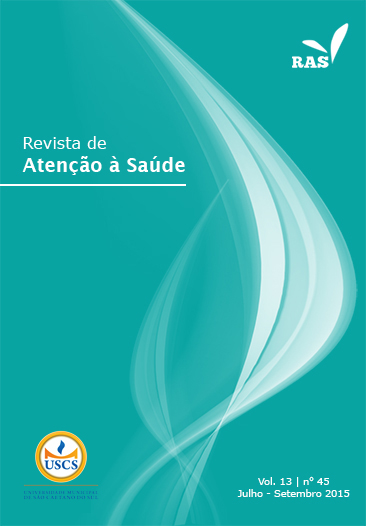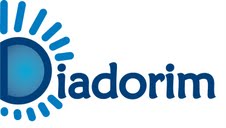SEXUAL MATURITY AND PHYSICAL FITNESS OF SCHOOLCHILDREN OF ILHABELA
DOI:
https://doi.org/10.13037/ras.vol13n45.2981Keywords:
Students, physical fitness, growth, development.Abstract
Introduction: the development of physical skills is directly related to a better quality of life at all stagesof life. Objective: verify the association between sexual maturation and physical fitness of schoolchildrenaged 7 to 18 years in the city of Ilhabela. Methods: The study is part of the Mixed Longitudinal Projecton Growth, Development and Physical Fitness of Ilhabela. The study included 1,156 students of bothsexes, aged 7 to 18 years old. The variables analyzed were: body weight, height, body fat, strength of upperand lower limbs, abdominal, flexibility, agility, speed, and cardiorespiratory fitness. Sexual maturationwas analyzed according to the self-assessment method of pubic hair (P1 to P5). The linear regressionanalysis was performed and one-way ANOVA followed by post hoc Bonferroni. The level of significancewas p<0.05. Results: In boys, we found that the percentage of body fat was 11.4% higher in P1 (p=0.04)and 10.2% higher in P3 (p=0.01), compared to P5. The differences between maturational stages wereflexibility (p=0.03) in the abdominal (p=0.04) and the test push-up (p<0.01) between P2 and P5. In girls,mean values of cardiorespiratory fitness were lower (p<0.01) for those in the final stages of maturation.Conclusion: there was association between sexual maturation evaluated from the development of pubichair (P1 to P5) and physical fitness variables of students from both sexes in the city of Ilhabela, before andafter adjusting for body weight, height, BMI and adiposity.Downloads
References
1. Pate, R.R. The evolving definition of physical fitness. Quest
Champaign. 1988;40(3):174-9.
2. Guedes DP, Guedes JERP. Atividade física, aptidão física e
saúde. Rev Bras Ativ Fis Saúde. 1995;1(1):18-35.
3. Myers J, Prakash M, Froelicher V, Do D, Partington S,
Atwood JE. Exercise capacity and mortality among men referred for exercise testing. N Engl J Med. 2002;346:793-801.
4. Gulati M, Pandey DK, Arnsdorf MF, Laudesdale DS,
Thisted RA, Wicklund RH, et al. Exercise capacity and the
risk of death in women: the St James Women Take Heart
Project. Circulation. 2003;108:1554-9.
5. Andersen LB, Harro M, Sardinha LB, Froberg K, Ekelund
U, Brage S, et al. Physical activity and clustered cardiovascular risk in children: a cross-sectional study (The Europen
Youth Heart Study). Lancet. 2006;368:299-304.
6. Twisk JWR, Kemper HCG, Van Mechelen W. The relationship between physical fitness and physical activity during adolescence and cardiovascular disease risk factors at
adult age. The Amsterdam growth and health longitudinal
study. Int J Sports Med. 2002;23:8-14.
7. Janz KF, Dawson JD, Mahoney LT. Increases in physical
fitness during childhood improve cardiovascular health during adolescence: the Muscatine study. Int J Sports Med.
2002;23:15-21.
8. Lefevre J, Philippaerts R, Delvaux K, Thomis M, Claessens
AL, Lysens R, et al. Relation between cardiovascular risk
factors at adult age, and physical activity during youth and
adulthood: the Leuven Longitudinal Study on Lifestyle,
Fitness and Health. Int J Sports Med. 2002;23:32-8.
9. Guedes DP, Guedes JERP, Guedes RP, Barbosa DS,
Oliveira JA. Atividade física habitual e aptidão física relacionada à saúde em adolescentes. Rev Bras Ciên Mov.
2002;10(1):13-21.
10. Glaner MF. Aptidão física relacionada à saúde de adolescentes rurais e urbanos em relação a critérios de referência. Rev
Bras Educ Fís Esp. 2005;19(1):13-24.
11. Canoy D. Distribution of body fat and risk of coronary
heart disease in men and women. Curr Opin Cardiol.
2008;23(6):591-8.
12. Guedes DP, Neto JT, Silva AJ. Motor performance in a sample of Brazilian schoolchildren. Motricidade. 2011;7:25-38.
13. Pasquarelli BN, Silva VO, Bismarck-Nasr EM, Loch MR,
Leão-Filho IB. Pubertal stage and overweight in school children from São José dos Campos, SP. Rev Bras Cineantropom
Desempenho Hum. 2010;12:338-44.
14. Ortega FB, Ruiz JR, Castillo MJ, Moreno LA, Urzanqui
A, González-Gross M et al. Health-related physical fitness according to chronological and biological age in adolescents. The AVENA study. J Sports Med Phys Fitness.
2008;48:371-9.
15. Ortega FB, Ruiz JR, Mesa JL, Gutiérrez A, Sjöström M.
Cardiovascular fitness in adolescents: the influence of sexual maturation status-the AVENA and EYHS studies. Am J
Hum Biol. 2007;19:801-8.
16. Biro FM, Huang B, Daniels SR, Lucky AW. Pubarche as
well as thelarche may be a marker for the onset of puberty. J
Pediatr Adolesc Gynecol. 2008;21:323-8.
17. Beunen GP, Malina RM, Renson R, Simons J, Ostyn M,
Lefevre J. Physical activity and growth, maturation and
performance: a longitudinal study. Med Sci Sports Exer.
1992;24:576-85.
18. Bouchard C. Genetic aspects of human obesity. In:
Bjorntorp P, Brodoff BN, editors. Obesity. New York:
Lippincott; 1992. p. 343-51.
19. Mota J, Guerra S, Leandro C, Pinto A, Ribeiro JC, Duarte
JA: Association of maturation, sex, and body fat in cardiorespiratory fitness. Am J Hum Biol. 2002; 14(6):707-12.
20. Soares NMM, Silva RJS, Melo EV, Oliveira ACC.
Influência da maturação sexual na aptidão cardiorrespiratória em escolares. Rev Bras Cineantropom Desempenho
Hum. 2014;16(2):223-32.
21. Matsudo VKR. Testes em ciências do esporte. São Paulo:
Gráficos Burti; 1998.
22. Ferrari GLM, Farias RM, Matsudo SMM, Matsudo VKR.
Uma revisão de três décadas do projeto misto-longitudinal de crescimento, desenvolvimento e aptidão física de
Ilhabela. Rev Bras Cien Saúde. 2013;11(36):57-67.
23. Ferrari GLM, Bracco MM, Matsudo VRM, Fisberg
M. Cardiorespiratory fitness and nutritional status of schoolchildren: Evolution of 30 years. J Pediat.
2013;89:366-73.
24. Åstrand PO, Ryhming I. A nomogram for calcualtion of
aerobic capacity (physical fitness) from pulse rate during
submaximal work. J Appl Physiol. 1954;7:218-21.
25. Tanner JM. Growth at adolescence. 2a ed. Oxford: Blackwell
Scientific. In: Malina RM, Bouchard C. Growth, Maturation,
and physical activity. Champaign: Human Kinetics Books, 1991.
26. Matsudo SMM, and Matsudo VKR. Self-assessment and
physical assessment of sexual maturation in Brazilian boys
and girls: Concordance and reproducibility. Am J Hum
Biol. 1994;6(4):451-5.
27. Field A. Descobrindo a estatística usando o SPSS. 2a ed.
Porto Alegre: Artmed; 2009.
28. Minatto G, Petroski EL, Silva DA. Body fat, muscular and
cardiorespiratory fitness according to sexual maturation
among Brazilian adolescents from a town of German colonization. Rev Paul Pediatr. 2013;31(2):189-97.
29. Matton L, Duvigneaud N, Wijndaele K, Philippaerts
R, Duquet W, Beunen G, et al. Secular trends in anthropometric characteristics, physical fitness, physical activity, and
biological maturation in Flemish adolescents between 1969
and 2005. Am J Hum Biol. 2007;19(3):345-57.
30. Ferrari GLM, Silva LJ, Ceschini FL, Oliveira LC, Andrade
DR, Matsudo VKR. Influência da maturação sexual na aptidão física em escolares do sexo masculino de Ilhabela - um estudo longitudinal. Rev Bras Ativ Fís Saúde. 2008;13(3):141-8.
31. Jones MA, Hitchen PJ, Stratton G. The importance of considering biological maturity when assessing physical fitness
measures in girls and boys aged 10 to 16 years. Ann Hum
Biol. 2000;27(1):57-65.
Downloads
Published
Issue
Section
License
Copyright (c) 2015 Gerson Luis de Morais Ferrari, Rodrigo Mateus Farias, Tatiane Kosimenko Ferrari, Victor Keihan Rodrigues Matsudo

This work is licensed under a Creative Commons Attribution-NonCommercial-NoDerivatives 4.0 International License.
Policy Proposal for Journals offering Free Delayed Access
Authors who publish in this magazine agree to the following terms:
- Authors maintain the copyright and grant the journal the right to the first publication, with the work simultaneously licensed under a Creative Commons Attribution License after publication, allowing the sharing of the work with recognition of the authorship of the work and initial publication in this journal.
- Authors are authorized to assume additional contracts separately, for non-exclusive distribution of the version of the work published in this magazine (eg, publishing in institutional repository or as a book chapter), with the acknowledgment of the authorship and initial publication in this journal.
- Authors are allowed and encouraged to publish and distribute their work online (eg in institutional repositories or on their personal page) at any point before or during the editorial process, as this can generate productive changes, as well as increase impact and citation of the published work (See The Effect of Open Access).









